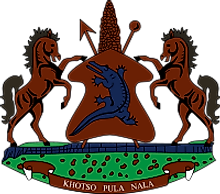[Lesotho 🇱🇸] BASUTO PONY
Babacar
No visit to Lesotho will be complete without a pony ride. It's the transport of choice for most Basotho as the sturdy ponies handle tight trails better than any 4X4. Pony rides can be arranged in the morning or afternoon by the local community usually under the direction of the hotel managers where you will be staying. Beginner riders can ask an accompanying person to come with their horse to lead them.
Log In
Yann2
Another interesting reference site,
Visit Lesotho
, has a page about Pony trekking in the mountains. Which form a majority of the country's terrain, all of it is over 1,000 m high - the highest lowest elevation in the world for a whole country.
Horse Riding and Pony Trekking
"The most popular mode of transport in rural Lesotho is the Basotho pony, a unique breed of horse distinguished by its relatively small size, robust build and unusually long stride. It is also known for its sure-footedness, calm temperament and stamina in mountainous terrain.
Pony trekking in LesothoPony and horse trekking is one of the finest ways for a visitor to explore the extensive network of bridle paths that crisscrosses the mountains of Lesotho. Short treks of a few hours’ duration can be arranged in many parts of the kingdom, providing novice riders with an excellent introduction to rural Basotho culture.
More rewarding for experience riders would be to arrange a multi-day pony trek supported by additional pack animals for gear and provisions. Most such treks stay overnight in a succession of remote high-altitude villages where you can completely escape the high-octane trappings of modern civilisation and gain intimate experience to rural Basotho culture and hospitality."
source : Visit Lesotho
From the same site, I also found a wonderful photo showing some cabanas in a lodge, and the wonderful mountains terrain that typifies Lesotho.
I think this would look lovely on a stamp? Saved a reduced size, attached here. Higher rez on the link above.
Yann2
And I found a nice additional reference site. Quoting :
The State of the Basotho Pony in Lesotho
"The total Basotho Pony population in Lesotho is estimated to be 98 000 to 112 000. Of these, 63 percent are found in the foothills and mountain areas. The horse is a source of pride in Lesotho and there are a large number of competent riders in rural areas. In some areas of the country the horse is the only alternative to travelling on foot. Horses are used mainly as a mode of transport over the rugged topography of Lesotho. Basotho Ponies are also used by tourists for trekking, which is a source of income for a few communities. In some parts of the country, horses are used as draught animals, mainly for ploughing, planting, carding and cultivating the fields (Rwelamira, 1998).
For many years, Lesotho, like many other countries, regarded the horse as having lost its place in the modern world, because it had ceased to be an animal of economic importance. The Basotho Pony is a natural resource of the country, but, as yet, no serious efforts have been made to exploit it commercially.
The Basotho Pony is famous for its stamina, docility, extremely hardy hoof, endurance, good temperament and sure-footedness, and the name has remained a valuable "trademark" to this day. Basotho Pony populations have been observed over many years. There have been declines in population caused by outbreaks of diseases and poor control of them. The reaction of Basotho horse breeders was to cross-breed the ponies with newly introduced breeds, which led to a loss of the Basotho Pony characteristics. In 1975, this deterioration was revealed by a study.
The reasons why the Basotho Pony has developed such a good reputation among horse breeds are as follows: Lesotho presents an ideal environment for the breeding and rearing of horses as it has a dry mountain climate with consequently low incidence of pandemic diseases. Its mountain pastures and high veldt have the potential to yield ideal grazing for horses, and farmland can produce high-quality fodder."
source : FAO dot org
Babacar
Yann2: Interesting additional informations. Thank you, Rob!
Yann2
Babacar: You are very welcome. And I just found out the Basutho horses are also featured on the Lesotho coat of arms.

National Coat Of Arms Of Lesotho
"Adopted on October 4, 1968, following independence, the coat of arms of Lesotho contains two Basutho horses supporting a Basotho shield. A crocodile is displayed on the shield with an assegai (lance) and knobkierie (club) crossed behind the shield. The national motto "Khotso, Pula, Nala" ("Peace, rain, prosperity") is featured on a ribbon below"
source : World Atlas
Babacar
Yann2: Amazing job, Rob! I didn't know that.
Yann2
Babacar, thank you - a nice idea, and Lesotho was still on our list of countries without ANY location stamps.
Great to see you have suggested it. Nice idea. 👍🍀😎
Nonethewiser
Thank you, Babacar! Nice job! They also seem to have great nature there.. Perhaps a stamps with a canyon or mountains in the background? :)
Babacar
Nonethewiser: It would be more than great if the stamp would be designed in this way. But will we be able to see the true morphology of the horse that will differentiate it from other horses? There is the question. However, The Turkmen Akhal-Teke was very well designed and we shouldn't have the same feeling of the design when we compare them. So yes seeing a landscape behind will be very interesting of course if the morphology of the horse is well matched.
Yann2
We would need to make sure this Lesotho stamp shows people using them for trails and hiking, mountains.
It's true the Mongolians also would use theirs this way, but hopefully it can be differentiated.
Or maybe find another alternative proposal if you can.
Babacar
Definitely! But I was talking about the one already did by Slowly team.